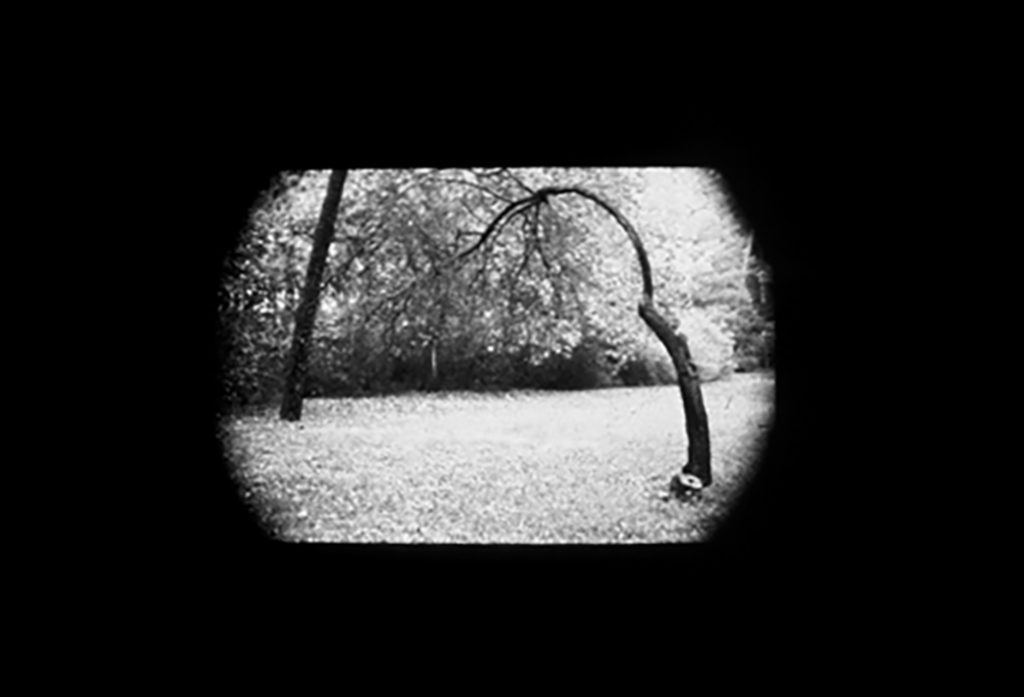
sad tree, Sachsenhausen (october 1995)
The tree is a potent symbol. It stands in for all of life, as in “tree of life” or “family tree.” The branches of a tree reach upward toward the heavens, while its body resides on earth and its roots burrow and creep into the netherworld below. The tree, with its graceful open arms and moisture seeking roots, was the ill used physical support for crucifixions in the early Christian era and in American lynchings in the late 19th and early 20th centuries. In the forests of fairy tales trees are ever watchful and all that unfolds in the world of the forest takes place under their attentive gaze. In the forests of Europe with their soft moss and pine needle carpets, one breathes the shades of the Brothers Grimm.
During the Second World War, in places like Sachsenhausen, Buchenwald, Auschwitz, Treblinka, and Sobibor, the trees stood witness to unspeakable acts played out in their presence. In the case of Buchenwald, the camp site was chosen because it was situated in the heavily forested Ettersberg; remote and deeply wooded. Forests also hid mass executions in the East. Villages were emptied of Jews, who were marched into nearby forests and shot, dumped into the newly dug pits that they themselves were forced to dig. Shovelling dirt over their corpses was left to the executioners. In more barren landscapes, camp barracks were built and the trees were planted afterward, providing a semblance of cover for what everyone already knew.
In 1995, I visited Sachsenhausen. Astonishingly, this concentration camp was in the middle of a sleepy suburb 30 minutes north of Berlin. The camp was liberated at the end of the Second World War. It made a smooth transition into the Soviet Zone of occupation as a camp for political prisoners; Nazi functionaries, Nazi sympathizers and anti-Communists. A large percentage of the victims of the camp during the Nazi era had been Soviet POW’s. The camp was closed in the spring of 1950. In 1961 the German Democratic Republic opened a national memorial there. Walking on the grounds of the camp, I was struck by the beauty and girth of several trees which I guessed to be hundreds of years old.
As I was leaving, walking back toward the entrance, I came across a small, young tree. It was bent under its own weight, its delicate branches reaching in the direction of its roots. If that tree had been a child, I would have described its condition as “failure to thrive.”
(sad tree, Sachsenhausen (1995) was originally shown in a project space called “The Hole” — literally a hole in the wall — at Postmasters Gallery in 1996.)